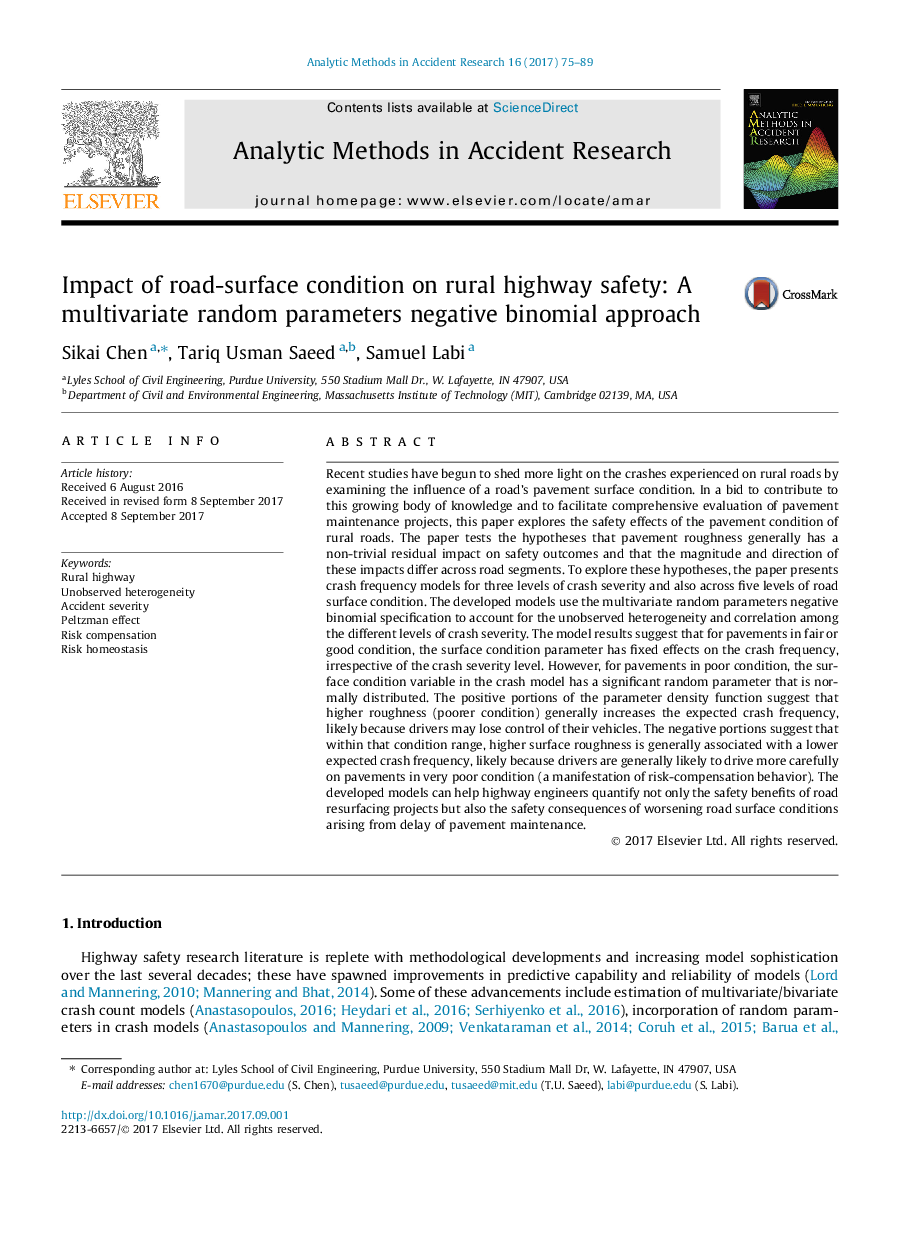| Article ID | Journal | Published Year | Pages | File Type |
|---|---|---|---|---|
| 5124659 | Analytic Methods in Accident Research | 2017 | 15 Pages |
â¢This paper examines the effect of road-surface condition on rural highway safety.â¢The presented multivariate models estimate crash severity levels simultaneously.â¢Five models are estimated for different levels of road-surface condition.â¢For pavements in poor condition, the road surface condition has a random parameter.â¢Risk compensation phenomenon regarding rural roads with poor pavement is confirmed.
Recent studies have begun to shed more light on the crashes experienced on rural roads by examining the influence of a road's pavement surface condition. In a bid to contribute to this growing body of knowledge and to facilitate comprehensive evaluation of pavement maintenance projects, this paper explores the safety effects of the pavement condition of rural roads. The paper tests the hypotheses that pavement roughness generally has a non-trivial residual impact on safety outcomes and that the magnitude and direction of these impacts differ across road segments. To explore these hypotheses, the paper presents crash frequency models for three levels of crash severity and also across five levels of road surface condition. The developed models use the multivariate random parameters negative binomial specification to account for the unobserved heterogeneity and correlation among the different levels of crash severity. The model results suggest that for pavements in fair or good condition, the surface condition parameter has fixed effects on the crash frequency, irrespective of the crash severity level. However, for pavements in poor condition, the surface condition variable in the crash model has a significant random parameter that is normally distributed. The positive portions of the parameter density function suggest that higher roughness (poorer condition) generally increases the expected crash frequency, likely because drivers may lose control of their vehicles. The negative portions suggest that within that condition range, higher surface roughness is generally associated with a lower expected crash frequency, likely because drivers are generally likely to drive more carefully on pavements in very poor condition (a manifestation of risk-compensation behavior). The developed models can help highway engineers quantify not only the safety benefits of road resurfacing projects but also the safety consequences of worsening road surface conditions arising from delay of pavement maintenance.
